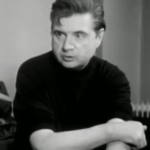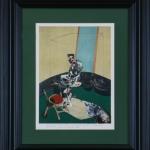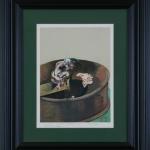
FRANCIS BACON
See all artists1909 - 1992 DUBLIN
Francis Bacon was a completely original Artist who, despite having no formal art training became one of the most famous 20th Century British Figurative Artists. He developed an Expressionist Style in the 1950’s painting mainly distorted forms of the human figure.
His abstracted figures are typically isolated in glass or steel geometrical cages, set against flat, nondescript backgrounds. Bacon took up painting in his early 20s but worked sporadically and uncertainly until his mid 30s. Unsure of his ability, he drifted as a highly complex bon vivant, closeted homosexual, gambler, interior decorator and designer of furniture, rugs and bathroom tiles. He later admitted that his artistic career was delayed because he spent too long looking for subjects that could sustain his interest. His breakthrough came with the 1944 triptych "Tree Studies of Figures at the Base of Crucifixion" which in the immediate aftermath of the Second World War, sealed his reputation as a uniquely bleak chronicler of the human condition. Remarking on the cultural significance of Three Studies, John Russell observed that "there was painting in England before the Three Studies, and painting after them, and no one...can confuse the two."
Bacon fell in love with petty criminal George Dyer after he caught him breaking into his house in 1963. From then on they had a stormy relationship until Dyer’s death from drink and drug overdose in 1971. Bacon painted Dyer obsessively even after his death producing “Triptych” May-June in 1973, depicting Dyer as he was found slumped head in a Hotel bathroom.
Prints of Bacon’s paintings were made by skilled craftsmen under Bacon’s direction.
The Pair of Lithograps are 1966 Deluxe Edition.


